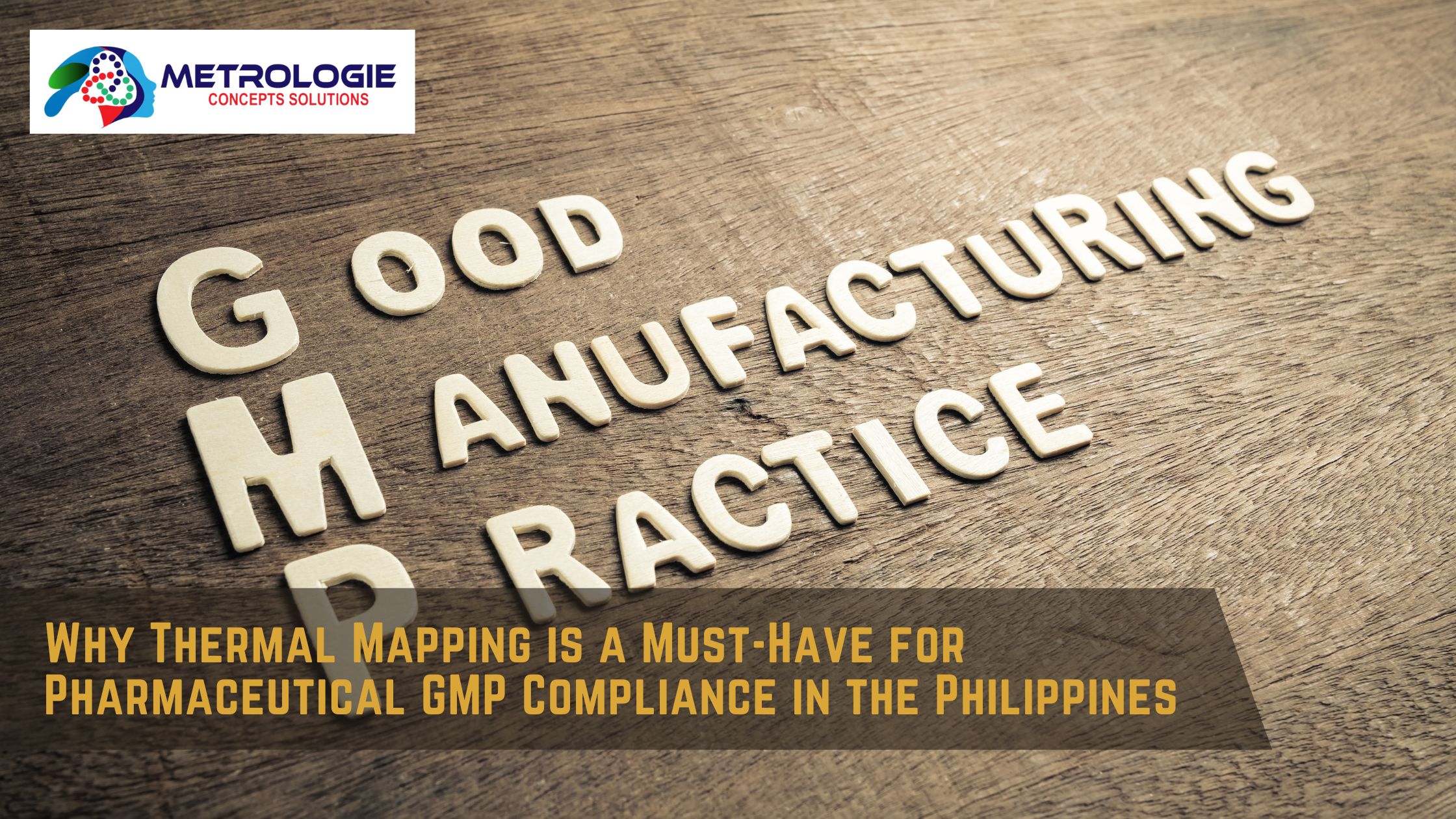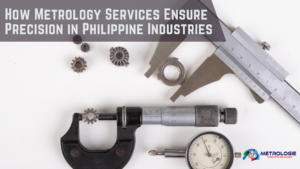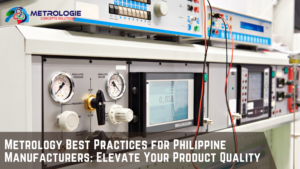In the highly regulated pharmaceutical industry of the Philippines, adherence to Good Manufacturing Practices (GMP) is not merely a recommendation; it is a legal imperative. The integrity, safety, and efficacy of pharmaceutical products directly impact public health, making stringent quality control measures non-negotiable. Among the critical aspects of GMP compliance, temperature control stands out as a fundamental requirement throughout the entire pharmaceutical lifecycle, from raw material storage to manufacturing, packaging, and distribution. Deviations from specified temperature ranges can compromise the quality, potency, and even safety of drug products, leading to significant financial losses, regulatory penalties, and, most importantly, jeopardizing patient well-being.
This comprehensive exploration delves into the indispensable role of thermal mapping in achieving and maintaining GMP compliance within the Philippine pharmaceutical sector. We will elucidate why accurate and comprehensive temperature monitoring, facilitated by thermal mapping techniques, is not just a best practice but an absolute necessity for ensuring product quality, adhering to stringent regulatory guidelines set forth by the Philippine Food and Drug Administration (FDA), and mitigating the myriad risks associated with temperature excursions. From understanding the regulatory landscape to implementing effective thermal mapping strategies and leveraging its numerous benefits, this guide underscores why thermal mapping is an essential tool for every pharmaceutical manufacturer operating in the Philippines committed to GMP excellence and patient safety.
Understanding the GMP Landscape in the Philippines and the Criticality of Temperature Control
The Philippine FDA enforces rigorous GMP guidelines that mirror international standards, emphasizing the need for controlled environmental conditions throughout the pharmaceutical supply chain. Temperature, being a critical environmental parameter, is explicitly addressed in various GMP sections. These regulations mandate that pharmaceutical manufacturers must establish and maintain documented procedures to ensure that materials and products are stored, processed, packaged, and distributed under appropriate temperature conditions to prevent degradation, contamination, and loss of efficacy.
Failure to adequately control and monitor temperature can lead to severe consequences, including:
- Product Degradation: Many pharmaceutical ingredients and finished products are sensitive to temperature fluctuations. Exposure to temperatures outside the specified range can accelerate chemical degradation, leading to a loss of potency, the formation of toxic byproducts, and a reduced shelf life.
- Microbial Contamination: Inadequate temperature control can create an environment conducive to the growth of microorganisms, leading to product contamination and posing a significant risk to patient safety.
- Loss of Efficacy: Temperature excursions can alter the physical and chemical properties of pharmaceutical products, rendering them less effective or even ineffective.
- Compromised Packaging Integrity: Extreme temperatures can damage packaging materials, compromising the sterility and stability of the product.
- Regulatory Non-Compliance: Failure to demonstrate adequate temperature control and monitoring can result in regulatory citations, warnings, product recalls, and even the suspension or revocation of manufacturing licenses by the Philippine FDA.
- Financial Losses: Product recalls, regulatory penalties, and the loss of consumer trust can lead to significant financial losses for pharmaceutical manufacturers.
- Reputational Damage: A failure to maintain product quality due to inadequate temperature control can severely damage a company’s reputation and erode consumer confidence.
Given these significant risks, a robust system for temperature monitoring and control is not just a matter of compliance; it is a fundamental aspect of responsible pharmaceutical manufacturing. Thermal mapping plays a crucial role in establishing and validating the effectiveness of these systems.
What is Thermal Mapping and Why is it Essential for GMP Compliance?
Thermal mapping, also known as temperature mapping or temperature profiling, is a systematic process of measuring and documenting temperature variations within a defined space or piece of equipment over a specific period. In the pharmaceutical context, this typically involves strategically placing calibrated temperature sensors throughout storage areas (e.g., warehouses, cold rooms, refrigerators, freezers), manufacturing environments, and transportation vehicles to identify hot and cold spots and understand the overall temperature distribution.
Here’s why thermal mapping is a must-have for GMP compliance in the Philippines:
1. Identification of Temperature Inhomogeneities:
- Storage Areas: Thermal mapping reveals temperature variations within storage facilities that might not be apparent with single-point temperature monitoring. This helps identify areas that consistently fall outside the acceptable temperature range, posing a risk to stored materials and products. Factors like airflow, proximity to doors or cooling units, and insulation effectiveness can create significant temperature gradients.
- Manufacturing Environments: Temperature and humidity control are critical in manufacturing areas. Thermal mapping can identify localized hot or cold spots caused by equipment operation, airflow patterns, or external environmental influences, ensuring uniform conditions for critical processes.
- Transportation Vehicles: Maintaining the required temperature range during the transportation of temperature-sensitive pharmaceuticals is crucial. Thermal mapping of transport vehicles helps identify areas prone to temperature fluctuations during transit, enabling the implementation of appropriate mitigation strategies.
2. Validation of Temperature Control Systems:
- Qualification of Equipment: During the qualification of temperature-controlled equipment (e.g., refrigerators, freezers, incubators, stability chambers), thermal mapping is essential to demonstrate that the equipment can consistently maintain the required temperature range throughout its internal volume under various operating conditions, including power outages and door openings. This is a critical aspect of Installation Qualification (IQ), Operational Qualification (OQ), and Performance Qualification (PQ).
- Mapping of Storage Facilities: Thermal mapping data provides the scientific evidence needed to define appropriate storage conditions and identify safe storage locations within warehouses and other storage areas, ensuring that pharmaceuticals are stored within their specified temperature limits.
3. Risk Assessment and Mitigation:
- Identifying High-Risk Areas: Thermal mapping helps identify areas within storage, manufacturing, or transportation environments that are most susceptible to temperature excursions. This allows pharmaceutical manufacturers to focus their monitoring efforts and implement targeted risk mitigation strategies in these critical zones.
- Developing Corrective and Preventive Actions (CAPA): When temperature excursions occur, thermal mapping data can provide valuable insights into the root causes, facilitating the development of effective corrective and preventive actions to prevent future incidents.
4. Compliance with Regulatory Requirements:
- Philippine FDA Guidelines: While specific regulations may evolve, the underlying principle of demonstrating adequate temperature control and monitoring is a constant requirement for GMP compliance in the Philippines. Thermal mapping provides the robust scientific data that the FDA expects to see as evidence of this control.
- International Standards: Many Philippine pharmaceutical manufacturers also adhere to international GMP standards (e.g., PIC/S, WHO). Thermal mapping is a recognized best practice and often a requirement under these global guidelines.
5. Optimizing Energy Efficiency:
- Identifying Inefficient Areas: Thermal mapping can reveal areas with poor insulation or inefficient temperature control systems, allowing manufacturers to implement energy-saving measures while maintaining GMP compliance.
In essence, thermal mapping provides a comprehensive understanding of temperature distribution, enabling pharmaceutical manufacturers in the Philippines to proactively manage temperature-related risks, validate their control systems, ensure product quality, and demonstrate compliance with stringent GMP regulations.
Key Elements of a Successful Thermal Mapping Study for Pharmaceutical GMP
Conducting a robust and GMP-compliant thermal mapping study requires careful planning, execution, and documentation. Key elements include:
1. Defining the Scope and Objectives:
- Clearly define the area or equipment to be mapped.
- Specify the temperature ranges to be monitored based on the requirements of the materials or products stored or processed.
- Determine the duration of the mapping study, considering seasonal variations and operational cycles.
- Establish the acceptance criteria for temperature uniformity and stability.
2. Sensor Selection and Calibration:
- Use calibrated temperature sensors with appropriate accuracy and resolution for the specified temperature ranges.
- Ensure that the sensors are traceable to national or international standards.
- Place a sufficient number of sensors strategically throughout the area or equipment to capture temperature variations effectively, including potential hot and cold spots. The number and placement should be scientifically justified based on the size and complexity of the area.
3. Data Logging and Monitoring:
- Utilize reliable data loggers with appropriate sampling intervals to capture temperature fluctuations over the defined duration.
- Consider factors like door openings, operational cycles, and external environmental conditions during the monitoring period.
- Document the exact location and identification of each sensor.
4. Data Analysis and Reporting:
- Analyze the collected temperature data to identify temperature gradients, hot and cold spots, and deviations from the acceptable range.
- Generate clear and concise temperature maps (e.g., isotherms) to visually represent the temperature distribution.
- Calculate statistical parameters (e.g., minimum, maximum, average temperatures, standard deviations) to quantify temperature uniformity and stability.
- Prepare a comprehensive report that includes the study methodology, sensor locations, data analysis, findings, conclusions, and recommendations for maintaining temperature control and ensuring GMP compliance.
5. Documentation and Record Keeping:
- Maintain detailed records of the thermal mapping protocol, sensor calibration certificates, data logs, analysis reports, and any corrective actions taken.
- Ensure that all documentation is readily retrievable for regulatory inspections.
6. Periodic Re-Mapping:
- Thermal mapping should not be a one-time event. Periodic re-mapping should be conducted at defined intervals (e.g., annually, or based on risk assessment) and whenever significant changes are made to the facility, equipment, or operating procedures to ensure continued GMP compliance.
By adhering to these key elements, pharmaceutical manufacturers in the Philippines can conduct effective thermal mapping studies that provide the necessary evidence of temperature control for GMP compliance.
Benefits of Implementing Thermal Mapping for Pharmaceutical GMP in the Philippines
The implementation of a robust thermal mapping program offers numerous benefits for pharmaceutical manufacturers in the Philippines beyond simply meeting regulatory requirements:
- Enhanced Product Quality and Safety: By ensuring consistent temperature control, thermal mapping helps maintain the quality, potency, and safety of pharmaceutical products, safeguarding patient health.
- Reduced Product Losses and Waste: Identifying and mitigating temperature excursions minimizes product degradation and spoilage, reducing waste and associated financial losses.
- Improved Operational Efficiency: Understanding temperature distribution can lead to optimized storage layouts and more efficient use of temperature control systems, potentially reducing energy consumption and operational costs.
- Stronger Regulatory Compliance: Comprehensive thermal mapping data provides robust evidence of adherence to GMP temperature control requirements, facilitating successful regulatory inspections and minimizing the risk of penalties.
- Enhanced Risk Management: Proactive identification of temperature-sensitive areas and potential risks allows for the implementation of targeted mitigation strategies, reducing the likelihood of costly temperature excursions.
- Increased Customer Confidence: Demonstrating a commitment to rigorous temperature control through thermal mapping builds trust and confidence among customers and stakeholders.
- Data-Driven Decision Making: Thermal mapping provides valuable data that can inform decisions related to facility design, equipment selection, storage practices, and transportation logistics.
- Continuous Improvement: The insights gained from thermal mapping can drive continuous improvement efforts in temperature control processes, leading to more robust and reliable systems over time.
In the competitive and highly regulated pharmaceutical landscape of the Philippines, thermal mapping is not just a compliance necessity; it is a strategic investment that yields significant benefits in terms of product quality, operational efficiency, risk management, and regulatory adherence.
Integrating Thermal Mapping with Other GMP Requirements
Thermal mapping is not an isolated activity but rather an integral part of a comprehensive GMP compliance program. It should be integrated with other key GMP elements, such as:
- Environmental Monitoring: Thermal mapping provides valuable data that complements other environmental monitoring activities, such as microbial monitoring and particulate monitoring, to provide a holistic understanding of the controlled environment.
- Change Control: Any changes to the facility, equipment, or operating procedures that could potentially impact temperature distribution should trigger a re-evaluation of the thermal map.
- Deviation Management: Temperature excursions identified through monitoring should be managed through a robust deviation management system, with thermal mapping data used to investigate root causes and implement CAPA.
- Training: Personnel involved in the handling, storage, and transportation of temperature-sensitive pharmaceuticals should be adequately trained on the importance of temperature control and the interpretation of thermal mapping data.
- Quality Risk Management: Thermal mapping should be incorporated into the overall quality risk management process to identify, assess, and control temperature-related risks.
By seamlessly integrating thermal mapping into the broader GMP framework, pharmaceutical manufacturers in the Philippines can create a robust and effective quality system that ensures the integrity and safety of their products.
Conclusion: Thermal Mapping – An Indispensable Pillar of Pharmaceutical GMP Compliance in the Philippines
In the Philippine pharmaceutical industry, where the health and well-being of the population are paramount, GMP compliance is not a choice but a fundamental obligation. Among the myriad requirements of GMP, temperature control stands as a critical factor influencing product quality, safety, and efficacy. Thermal mapping emerges not merely as a recommended practice but as an indispensable tool for achieving and maintaining this crucial control.
By providing a comprehensive understanding of temperature distribution within storage areas, manufacturing environments, and transportation vehicles, thermal mapping enables pharmaceutical manufacturers in the Philippines to identify risks, validate control systems, ensure regulatory compliance, and ultimately safeguard the quality of their products and the health of the patients who rely on them. Embracing thermal mapping as a core element of their GMP strategy is not just about adhering to regulations; it is about demonstrating a commitment to quality, safety, and ethical pharmaceutical practices that are essential for the well-being of the Filipino people and the continued growth and integrity of the Philippine pharmaceutical sector. In this context, thermal mapping is not just a must-have; it is a fundamental pillar of pharmaceutical GMP compliance in the Philippines.




